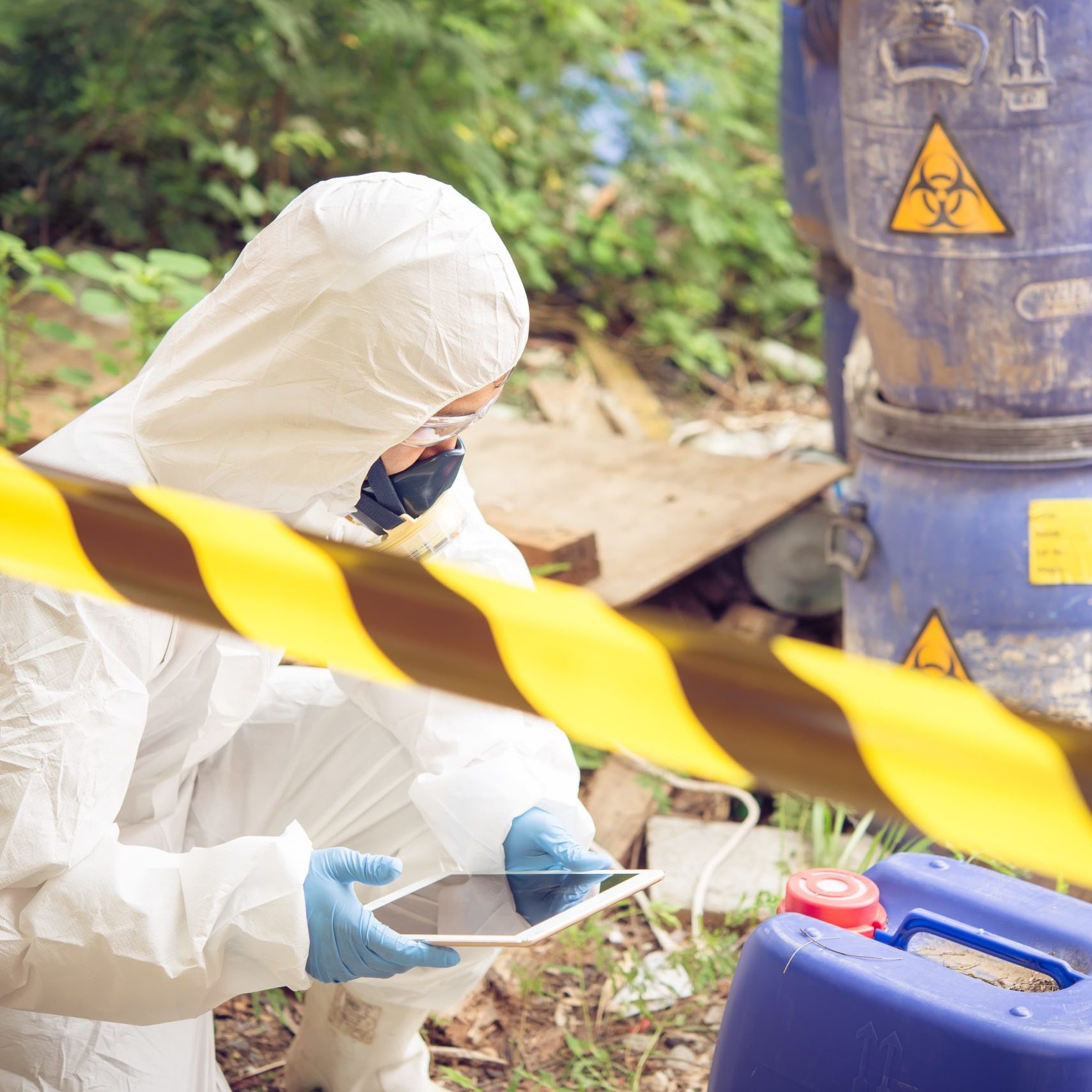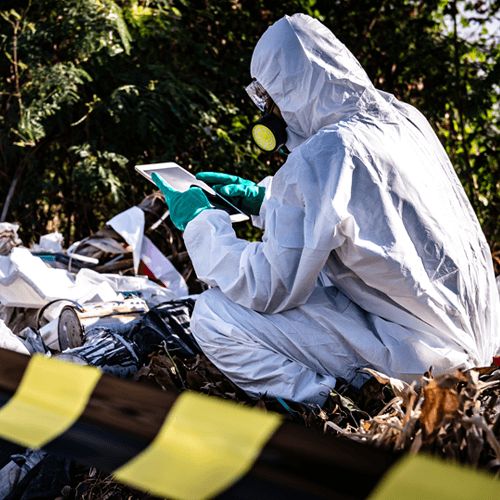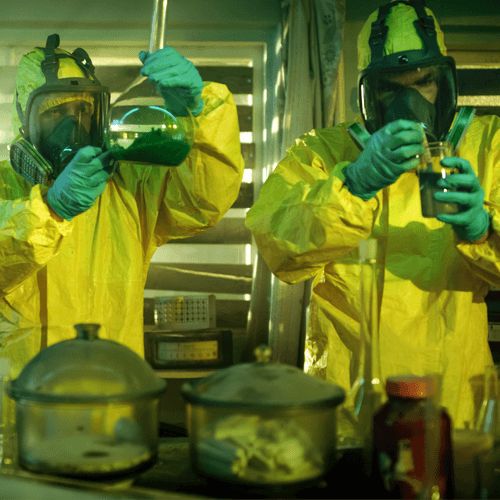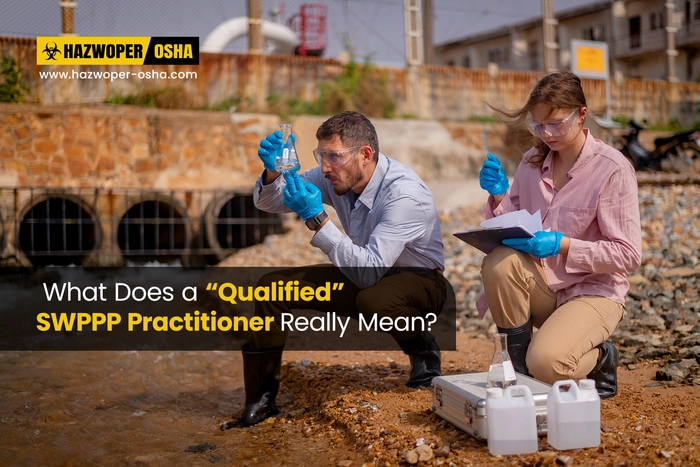Hazardous Waste Training: Who Needs It?

There are various types of hazardous wastes that people are exposed to daily. Workers involved in hazardous waste operations are at greater risk of exposure to adverse health effects than others. These health impacts can vary from mild, short-term illnesses to more severe, long-term health impacts such as eye and skin irritations, allergies, respiratory illnesses, and some forms of cancers. With over 44,000 people employed as hazardous materials removal workers in the United States as of May 2021 (BLS), the risk of occupational diseases arising due to handling hazardous waste and removal of other types of hazardous materials is very high.
Considering the growing number of people working with hazardous waste every day, regulatory bodies have developed and implemented stringent standards and frameworks to protect the safety and health of hazardous waste workers. One such authority is the Occupational Safety and Health Administration, known as OSHA. OSHA, whose focus is to safeguard employees’ health, has developed safety standards and regulations across industries and types of work. The HAZWOPER (Hazardous Waste Operations and Emergency Response) Standards for the Construction Industry and the General Industry is one such standard that must be adhered to by employers and employees. Another is the Resource Conservation and Recovery Act (RCRA), a framework that regulates the safe work practices of hazardous solid waste generators. The RCRA is a law that is implemented by the U.S. Environmental Protection Agency (EPA).
In 2024, the EPA proposed a significant update to the RCRA by adding nine per- and polyfluoroalkyl substances (PFAS) to the list of hazardous constituents. This move underscores growing concerns over emerging contaminants and aims to enhance environmental protections and improve hazardous waste handling standards under the RCRA framework.
The somewhat diverse objectives of these two regulatory agencies can sometimes lead to confusion as to who needs hazardous waste training and the frequency of such training programs. A basis that all employers of hazardous materials removal and hazardous waste operations can follow is to protect employees exposed to hazardous waste, either in liquid, gaseous, or solid form. This can be done by following the requirements as explained in the OSHA HAZWOPER standards for various worksite control measures. This would involve utilizing proper engineering and administrative controls aligned to the principles of the Hierarchy of Controls at the worksite to protect hazardous waste workers while they carry out their work tasks. Furthermore, employers must provide hazardous waste workers with appropriate online training, on-the-job training, and personal protective equipment (PPE).
Fulfilling HAZWOPER and RCRA Training Needs
To comply with training requirements, guidance can be obtained from the relevant OSHA regulatory standards or the RCRA program. The HAZWOPER standards have segregated training according to different levels of worker exposure to hazardous waste, namely, HAZWOPER (e) training, HAZWOPER (p) training, and HAZWOPER (q) training.
State-Specific Training Requirements
While federal regulations such as OSHA and RCRA set the baseline for safety compliance, many states have adopted more stringent standards. For example, California, New York, and Washington often implement regulations that go beyond federal mandates, requiring additional or more frequent training. To remain fully compliant, employers must ensure their safety programs align with federal and state-level requirements. Partnering with knowledgeable training providers like Triumvirate Environmental or Safety Compliance Training can help businesses navigate these variations effectively.
Hazardous Waste Training Requirements
What is HAZWOPER and What is its Purpose?
It, therefore, becomes obvious that hazardous waste workers require suitable and comprehensive training on the safe handling and management of hazardous waste, irrespective of its form (solid hazardous waste, liquid hazardous waste, or hazardous waste gasses). Accordingly, both OSHA and the EPA’s RCRA Program have developed training and education requirements for hazardous waste workers, including the need for initial training as well as annual refresher training.


Who Needs RCRA Training?
According to the RCRA, all workers involved in generating, storing, treating, and disposing of hazardous waste must be provided with training by the employer. These hazardous waste workers include personnel employed by large quantity generators (LQG), small quantity generators (SQG), and very small quantity generators (VSQG); as defined by the RCRA program.
EPA Hazardous Waste Generator Categories
Therefore, employees whose job responsibilities include all or any one of the following tasks must be provided with RCRA annual training by their employers.
- Personnel who identify and calculate hazardous waste.
- Employees engaged in bundling and collecting hazardous waste.
- Workers involved in marking, labeling, inspecting, handling, or moving hazardous waste containers.
- Personnel managing hazardous materials (hazmat) waste in satellite areas.
- Workers operating a waste-generating process.
- Anyone who reads and applies RCRA regulations at the workplace or worksite.
Who Needs OSHA-HAZWOPER Training?
OSHA’s HAZWOPER standards apply to employees who are exposed to and could possibly be exposed to hazardous substances and hazardous waste. The HAZWOPER standards divide these employers and their employees into five (5) distinct groups as follows.
- Employers and employees involved in clean-up operations conducted at uncontrolled hazardous waste sites required by a federal, state, or local governmental body.
- Employers and employees engaged in corrective actions involving clean-up operations at sites covered by the RCRA.
- Personnel undertaking voluntary clean-up tasks at sites recognized by federal, state, local, or other governmental bodies as uncontrolled hazardous waste sites.
- Personnel engaged in operations involving hazardous wastes that are conducted at treatment, storage, and disposal facilities regulated by Title 40 Code of Federal Regulations Parts 264 and 265 under RCRA, or by agencies under agreement with the U.S. Environmental Protection Agency to implement RCRA regulations.
- Emergency response operations for releases of, or substantial threats of releases of, hazardous substances regardless of the location of the hazard.
These operations are specified as per OSHA HAZWOPER standards 1910.120(a)(1)(i-v) and 1926.65(a)(1)(i-v).
(Source: OSHA, n.d.)
OSHA 40-Hour HAZWOPER – 29 CFR 1910.120 (e) Training Course
OSHA 24-Hour HAZWOPER – 29 CFR 1910.120 (e) Training Course
OSHA 8-Hour HAZWOPER Refresher – 29 CFR 1910.120 (e) Training Course
OSHA 8-Hour HAZWOPER Supervisor Training Course
OSHA 8-Hour HAZWOPER Supervisor Refresher Training Course
How Often Do Hazardous Waste Workers Need RCRA and HAZWOPER Training?
Both the EPA’s RCRA Program and OSHA’s HAZWOPER standards require employers to provide mandatory annual online or classroom-style training to their employees. Employees must be trained before they start work at hazardous waste sites or in hazardous waste operations.
As per the RCRA rules (40 CFR 262.17(a)(7)), employers classified as large quantity generators (LQGs) must provide mandatory annual training to their employees working in hazardous waste facilities, also known as treatment, storage, and disposal facilities (TSDF). Alternately, the EPA’s RCRA Program does not mandate annual training for hazardous waste workers employed by small quantity generators (SQGs). However, the RCRA rule requires hazardous waste workers to be "thoroughly familiar" with RCRA regulatory requirements. Thus, as a best practice, it is recommended that employees of SQGs also be given annual RCRA training.
According to OSHA’s HAZWOPER standards (1910.120(a)(1)(i-v) and 1926.65(a)(1)(i-v)), employees require annual training when involved in work operations at hazardous waste TSD facilities.
Thus, employers must provide either the RCRA Training or the HAZWOPER RCRA TSDF training, as relevant, to employees before they start work, and annually thereafter. The RCRA and HAZWOPER RCRA TSD annual refresher training must be completed before the expiration date of the previous training completion certificate.
What Should be the Duration of the RCRA and HAZWOPER Training?
The OSHA HAZWOPER standards specify the duration of training. Thus, all HAZWOPER training courses identify the training time in hours. For example, 40-Hour HAZWOPER training, 24-Hour HAZWOPER training, and 8-Hour HAZWOPER refresher training.
The EPA does not specify the duration of training for its RCRA Program. The requirement is to ensure employees get adequate training to safely conduct their job tasks without adversely impacting their health and well-being while working with hazardous waste. The employer is responsible for identifying the appropriate training duration for each employee based on business operations and an individual’s job tasks. Such training must comply with mandated training requirements as per RCRA regulations.
Hazardous Waste Workers: Training Course FAQs
Who Needs RCRA Hazardous Waste Initial and Annual Training?
Employees engaged in hazardous waste operations involving the generations, storage, treatment, and/or disposal of hazardous waste must be provided with training by the employer.
Who needs the OSHA HAZWOPER 24-Hour RCRA TSDF Training Course?
The OSHA HAZWOPER 24-Hour RCRA TSDF training course is required for all newly recruited personnel at RCRA permitted hazardous waste treatment, storage, and disposal facilities (TSDF) due to their continued exposure to hazmat and other health hazards. Examples of such personnel include supervisors, workers, and environmental professionals.
Current employees of RCRA permitted hazardous waste treatment, storage, and disposal (TSD) facilities who do not meet the training requirements as specified by OSHA, also must receive this 24-hour training.
Who needs the OSHA HAZWOPER 8-Hour RCRA TSDF Refresher Training Course?
Hazardous waste workers employed by TSDFs require 8 hours of refresher training annually, as per OSHA HAZWOPER standards.
Who needs the OSHA HAZWOPER Supervisor Training Course?
OSHA standards require all managers and supervisors who supervise or are directly responsible for employees at a hazardous waste site and seeking Hazardous Waste Operations and Emergency Response (HAZWOPER) certification to complete at least eight hours of specialized training.
Generally, OSHA expects a general hazardous waste site worker who is becoming a supervisor or manager for the first time to receive at least 16 hours of training the year they become a supervisor: 8 hours of the HAZWOPER supervisory training plus 8 hours of the HAZWOPER refresher training.
Who needs the OSHA HAZWOPER Supervisor Refresher Training Course?
Managers and supervisors seeking to refresh their initial OSHA 8-Hour HAZWOPER Supervisor Training Certification in compliance with OSHA 29 CFR 1910.120(e)(8) and OSHA 29 CFR 1926.65(e)(8) regulations must enroll in this training course.
Who needs the OSHA HAZWOPER 40-Hour Training Course?
General site workers engaged in hazardous material removal or other activities that could expose or potentially expose them to hazardous substances.
Who needs the OSHA HAZWOPER 24-Hour Training Course?
General site workers who encounter hazardous substances occasionally and those not involved in hazardous waste clean-up operations.
Who needs the OSHA HAZWOPER 8-Hour Refresher Training Course?
General site workers who work at hazardous waste sites, continually or occasionally, and those workers are involved in hazardous waste clean-up operations. Employees need to annually renew the initial 40-Hour or 24-Hour HAZWOPER training certificate to ensure their training meets OSHA compliance requirements.
Reference
OSHA. (n.d.). Hazardous Waste Operations and Emergency Response (HAZWOPER). Website. https://www.osha.gov/emergency-preparedness/hazardous-waste-operations/faq-hazpower
U.S. Bureau of Labor Statistics (BLS). (2021, May). Occupational Employment and Wages Statistics, May 2021. 47-4041 Hazardous Materials Removal Workers. Website. https://www.bls.gov/oes/current/oes474041.htm#(1)

 EN |
EN |  ES
ES





































































































































